Related Research Articles
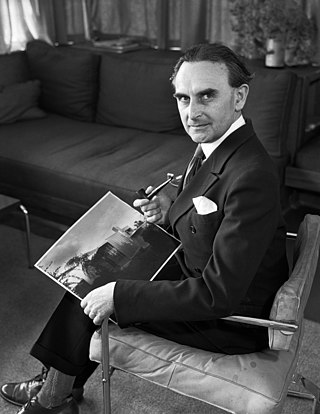
Richard Joseph Neutra was an Austrian-American architect. Living and building for most of his career in Southern California, he came to be considered a prominent and important modernist architect. His most notable works include the Kaufmann Desert House, in Palm Springs, California.

The Spanish Colonial Revival style is an architectural stylistic movement arising in the early 20th century based on the Spanish colonial architecture of the Spanish colonization of the Americas.
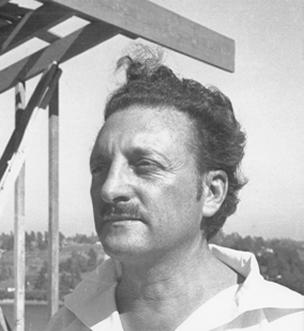
Rudolph Michael Schindler was an Austrian-born American architect whose most important works were built in or near Los Angeles during the early to mid-twentieth century.

Paul Revere Williams, FAIA was an American architect based in Los Angeles, California. Most of the buildings he designed were in Southern California and included the homes of numerous celebrities, such as Frank Sinatra, Lucille Ball and Desi Arnaz, Lon Chaney, Barbara Stanwyck, and Charles Correll. He also designed many commercial, institutional and civic buildings.
Albert Frey was a Swiss-born architect who established a style of modernist architecture centered on Palm Springs, California, United States, that came to be known as "desert modernism".
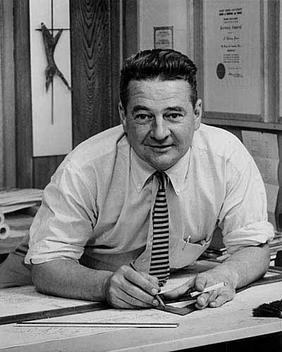
Archibald Quincy Jones was a Los Angeles–based architect and educator known for innovative buildings in the modernist style and for urban planning that pioneered the use of greenbelts and green design.

Mid-century modern (MCM) is a movement in interior design, product design, graphic design, architecture and urban development that was present in all the world, but more popular in the United States, Brazil and Europe from roughly 1945 to 1970 during the United States's post-World War II period.
César Pelli was an Argentine-American architect who designed some of the world's tallest buildings and other major urban landmarks. Two of his most notable buildings are the Petronas Towers in Kuala Lumpur and the World Financial Center in New York City. The American Institute of Architects named him one of the ten most influential living American architects in 1991 and awarded him the AIA Gold Medal in 1995. In 2008, the Council on Tall Buildings and Urban Habitat presented him with The Lynn S. Beedle Lifetime Achievement Award.
Gregory Samuel Ain was an American architect active in the mid-20th century. Working primarily in the Los Angeles area, Ain is best known for bringing elements of modern architecture to lower- and medium-cost housing. He addressed "the common architectural problems of common people".
Barton Myers is an American architect and president of Barton Myers Associates Inc. in Santa Barbara, California. With a career spanning more than 40 years, Myers is a fellow of the American Institute of Architects and was a member of the Ontario Association of Architects while working in Canada earlier in his career.

Fentress Architects is an international design firm known for large-scale public architecture such as airports, museums, university buildings, convention centers, laboratories, and high-rise office towers. Some of the buildings for which the firm is best known include Denver International Airport (1995), the modernized Tom Bradley International Terminal at LAX (2013), the National Museum of the Marine Corps near Quantico, Virginia (2005), and the Green Square Complex in Raleigh, North Carolina (2012).

Cliff May (1903–1989) was a building designer practicing in California best known and remembered for developing the suburban Post-war "dream home", and the Mid-century Modern
The USC School of Architecture is the architecture school at the University of Southern California. Located in Los Angeles, California, it is one of the university's twenty-two professional schools, offering both undergraduate and graduate degrees in the fields of architecture, building science, landscape architecture and heritage conservation.
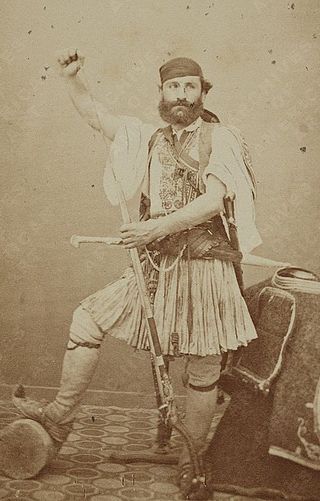
Lockwood de Forest was an American painter, interior designer and furniture designer. A key figure in the Aesthetic Movement, he introduced the East Indian craft revival to Gilded Age America.

Kevin Daly Architects (KDA) is Kevin Daly's architecture firm in Los Angeles, California. It was founded in 1990 as Daly Genik. Daly has taught architecture and is a fellow at the American Institute of Architects (FAIA).

William Francis Cody was an influential desert modern architect working in Palm Springs during the peak of the Modern Architecture Movement. Like many of the architects during the mid-20th century, Cody designed almost anything Palm Springs allowed him to; houses, cluster housing, churches, offices, restaurants, schools, hotels, and club houses. His residential projects illustrated simplicity of form, natural light, and large windows displaying a smooth connection between interior and exterior. Cody maintained a diverse practice in the Coachella Valley of California. His work included designing country clubs, residences, hotels, a library, and church projects in Palm Springs, Indian Wells, Rancho Mirage, Palm Desert, and in southern California, Arizona, Mexico, and Cuba.
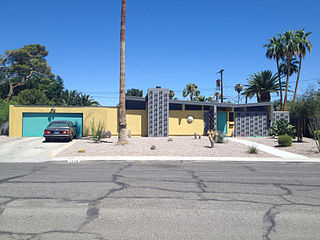
William Krisel was an American architect best known for his pioneering designs of mid-century residential and commercial architecture. Most of his designs are for affordable homes, especially tract housing, with a modern aesthetic.
Walter S. White (1917–2002) was an American modernist architect and industrial designer who worked in the Coachella Valley, CA in the 1950s and the Colorado Springs, CO area in the 1960s. White is noted for influencing innovative roofing and window systems in early Palm Desert, CA architecture.
The Palm Springs School of Architecture, often called Desert Modernism, is a regional style of post-war architecture that emerged in Palm Springs, California. Many of the architects who pioneered this style became world-renowned later in their own careers. Numerous buildings and homes by these architects remain in the Coachella Valley. Additionally, this style of architecture is showcased annually at the Modernism Week event in Palm Springs.

Wright Saltus Ludington (1900–1992) was an art collector, artist and one of the founding members of the Santa Barbara Museum of Art.
References
- 1 2 3 4 5 Woo, Elaine (December 9, 2012). "Barry Berkus dies at 77; architect of mass-market housing". The Los Angeles Times. Retrieved October 21, 2018.
- 1 2 3 4 5 6 7 8 9 10 Moser, Pat (December 2, 2012). "Barry Alan Berkus: 1935-2012: Architect, Adventurer". Santa Barbara Independent. Retrieved October 21, 2018.
- ↑ Conroy, S. Claire (December 4, 2012). "Barry Berkus Remembered". Architect Magazine. Retrieved October 21, 2018.